Summary of “Catch-22”, a novel by American author Joseph Heller. Published in 1961, it is set during World War II and follows a U.S. Army Air Forces B-25 bombardier named Captain John Yossarian. The novel is renowned for its satirical portrayal of bureaucratic operation and reasoning. The title has become synonymous with a no-win situation or a problem for which the only solution is denied by a circumstance inherent in the problem itself, leading to a paradoxical situation.
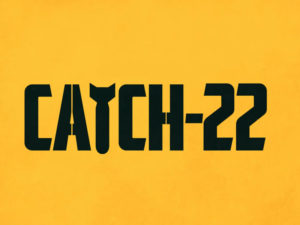 Short Summary
Short Summary
Captain John Yossarian, a U.S. Army Air Forces B-25 bombardier, is stationed on the island of Pianosa near Italy during World War II. He becomes increasingly frantic as the number of missions he must fly keeps rising. Each time he gets close to completing his required missions for discharge, the commanding officers raise the limit.
Yossarian’s squadron encounters absurd and illogical rules, the most prominent being Catch-22, a regulation that stipulates a concern for one’s safety in the face of dangers that are real and immediate is the process of a rational mind; a bomber pilot is considered insane if he willingly continues to fly dangerous combat missions, but if he applies for a discharge on the grounds of insanity, his request proves he’s sane and therefore ineligible to be relieved from duty.
Throughout the novel, Yossarian is desperate to preserve his life by escaping the war. His peers include a host of eccentric characters, each dealing with the war’s madness in different ways. The narrative reveals the experiences and emotions of Yossarian and the other airmen in the camp, capturing the absurdity of their situation as they try to maintain their sanity while fulfilling their service requirements so that they may return home.
Comprehensive Summary of “Catch-22” Chapter-by-chapter
Chapter 1: The Texan
Yossarian feigns illness in a hospital, meeting a Texan whose relentless cheerfulness drives everyone away. We’re introduced to the concept of Catch-22, although not yet by name.
Chapter 2: Clevinger
Yossarian argues with Clevinger, a patriot who cannot grasp the irrationality of the bureaucracy. Clevinger’s eventual disappearance foreshadows the dark turns of the war.
Chapter 3: Havermeyer
Havermeyer is a fearless and skilled pilot, yet dangerously indifferent to others’ safety during flights, highlighting the individualistic survival strategies.
Chapter 4: Doc Daneeka
Doc Daneeka explains the catch in Catch-22, embodying the self-serving survival mentality. He refuses to ground Yossarian unless he’s insane, but applying to be grounded proves sanity.
Chapter 5: Chief White Halfoat
The narrative shifts to Chief White Halfoat, whose backstory includes being displaced by oil companies, illustrating the theme of profit over people.
Chapter 6: Hungry Joe
Hungry Joe has completed enough missions but cannot be sent home due to ever-increasing mission quotas. His plight emphasizes the cruelty of the system.
Chapter 7: McWatt
McWatt is a carefree pilot, almost dangerously so. His reckless flying contrasts with the gravity of the war, underscoring the surreal atmosphere of the airbase.
Chapter 8: Lieutenant Scheisskopf
Scheisskopf is obsessed with parades and punishing his men, a satire of military obsession with form over function.
Chapter 9: Major Major Major Major
Promoted due to a computer error, Major Major struggles with his accidental authority and isolation, representing the absurdity of the military hierarchy.
Chapter 10: Wintergreen
Wintergreen is a mail clerk who has more real power than the generals, showing the disconnect between official ranks and actual influence.
Chapter 11: Captain Black
Captain Black uses loyalty oaths to torment those he dislikes, embodying petty tyranny and the manipulation of patriotism.
Chapter 12: Bologna
A mission to Bologna showcases the dangers the men face and Yossarian’s deep fear of death, as he tries to avoid combat.
Chapter 13: Major — De Coverley
The enigmatic Major — De Coverley rents apartments for the officers in newly captured cities, a task juxtaposing leisure with the brutalities of war.
Chapter 14: Kid Sampson
Kid Sampson is an innocent pilot whose tragic fate during a freak accident with McWatt underscores the random cruelty of war.
Chapter 15: Piltchard & Wren
The two officers in charge of scheduling flights are portrayed as inept, contributing to the chaos and danger of the missions.
Chapter 16: Luciana
Yossarian’s affair with Luciana in Rome provides a momentary escape, though it ends with a stark reminder of the war’s reach into personal lives.
Chapter 17: The Soldier in White
A bandaged figure in the hospital symbolizes the dehumanizing effects of war and the bureaucracy’s indifference to individual suffering.
Chapter 18: The Soldier Who Saw Everything Twice
This chapter revisits the hospital, highlighting Yossarian’s attempts to escape the madness of the war by hiding in the hospital.
Chapter 19: Colonel Cathcart
Colonel Cathcart, the ambitious group commander, keeps raising mission counts to impress his superiors, regardless of the risk to his men.
Chapter 20: Corporal Whitcomb
Whitcomb is a chaplain’s assistant who undermines the chaplain, representing the inversion of moral structures in the wartime setting.
Chapter 21: General Dreedle
General Dreedle represents the high command, more concerned with discipline and image than the well-being of the men.
Chapter 22: Milo the Mayor
Milo Minderbinder’s control over the black market economy reflects the theme of profit and absurdity, as he becomes the mayor of Palermo.
Chapter 23: Nately’s Old Man
Nately debates an old Italian man about the virtues of America and the war, a discussion that exposes the generational and cultural divide.
Chapter 24: Milo
Milo’s syndicate expands, and his amoral business practices become a metaphor for the corrupting influence of power and profit.
Chapter 25: The Chaplain
The chaplain begins to question his faith and the war, experiencing a crisis that mirrors the moral conflict within the squadron.
Chapter 26: Aarfy
Aarfy’s rape and murder of a maid in Rome and his subsequent indifference shock Yossarian, highlighting the moral decay engendered by the war.
Chapter 27: Nurse Duckett
Yossarian’s relationship with Nurse Duckett offers brief respite, yet his trauma and paranoia from the war intrude upon the romance.
Chapter 28: Dobbs
Dobbs, driven to madness by fear, plots to kill Colonel Cathcart, a plan that reveals the desperate measures considered by the men.
Chapter 29: Peckem
General Peckem’s obsession with taking over General Dreedle’s command showcases the pettiness of military politics.
Chapter 30: Dunbar
Dunbar’s attempts to “live longer” by being bored are emblematic of the men’s efforts to cope with the terror of their reality.
Chapter 31: Mrs. Daneeka
Mrs. Daneeka’s receipt of a false death notification for her husband conveys the disconnect between the bureaucracy and the human lives it affects.
Chapter 32: Yo-Yo’s Roomies
Yossarian’s roommates, Nately and Dunbar, provide contrasting perspectives on the war, each coping in their own way.
Chapter 33: Nately’s Whore
After Nately’s death, his girlfriend, a Roman prostitute, blames Yossarian and repeatedly attempts to kill him, a manifestation of the pervasive grief and loss.
Chapter 34: Thanksgiving
The chaos of a Thanksgiving celebration gone wrong encapsulates the disorder and loss of control prevalent among the airmen.
Chapter 35: Milo the Militant
Milo’s power reaches absurd heights as he orchestrates a bombing of his own squadron, an act that exemplifies the novel’s dark satire.
Chapter 36: The Cellar
Yossarian’s visit to a friend in a cellar confronts him with the cruel reality of injuries and the physical costs of war.
Chapter 37: General Scheisskopf
Scheisskopf’s rise to power despite his incompetence further criticizes the flawed leadership and the reward of blind ambition.
Chapter 38: Kid Sister
Nately’s Whore’s kid sister represents innocence caught in the crossfire, as Yossarian tries to protect her.
Chapter 39: The Eternal City
Yossarian’s harrowing experience in Rome, where he encounters depravity and despair, starkly contrasts with the earlier, idyllic portrayals of the city.
Chapter 40: Catch-22
The full implications of Catch-22 become painfully clear to Yossarian, as he understands the inescapable nature of the war’s bureaucratic trap.
Chapter 41: Snowden
In a flashback, the death of Snowden, a gunner, exposes the grim reality of war and cements Yossarian’s resolve against the insanity of the conflict.
Chapter 42: Yossarian
Yossarian’s act of rebellion, walking around naked, reflects his final break with the military’s expectations, and he ultimately refuses to fly more missions.
The book concludes with Yossarian’s decision to desert the army and seek asylum in neutral Sweden, choosing self-preservation and sanity over the madness of war.
Interesting facts
- Initial Reception: “Catch-22” was not an immediate bestseller. Its popularity grew through word of mouth until it became a classic, illustrating the sometimes slow burn of a book’s path to fame.
- Influence on Language: The term “Catch-22” has entered the English language, referring to a no-win situation or a problem whose solution is rendered impossible by the circumstances of the problem.
- Real-Life Inspiration: Heller drew from his own experiences as a B-25 bombardier during WWII. The absurdity of war depicted in the novel reflects the real absurdities Heller observed.
- Writing Time: It took Heller eight years to complete the novel. Despite this lengthy process, his work has had a lasting impact on literature.
- Numerology: The number 22 has no special significance; Heller initially chose 18, then 11, and finally settled on 22, which was considered funnier sounding.
- Theatrical Adaptations: “Catch-22” was adapted into a play in 1971 and a film in 1970, directed by Mike Nichols.
- Sequel Novel: Heller wrote a sequel titled “Closing Time” in 1994, which revisits some of the characters from “Catch-22” as they navigate old age and a post-war society.
- Cultural References: “Catch-22” has been referenced in various other media, including movies, music, and television, showcasing its permeation into popular culture.
- Critical Opinions: While now considered a classic, some contemporary critics initially found Heller’s novel disjointed and its humor in poor taste, given the serious subject of war.
- TV Series: In 2019, “Catch-22” was adapted into a six-part miniseries co-directed by and starring George Clooney.
Frequently Asked Questions About “Catch-22”
What is the “Catch-22” in the novel?
The “Catch-22” is a rule that articulates a paradox within the military regulations: Airmen who are sane enough to recognize the danger of their missions and request to be dismissed on grounds of insanity are thereby considered sane and ineligible for dismissal. Conversely, if they willingly continue to fly dangerous missions without making such a request, their sanity is not questioned, demonstrating they are insane, but they still cannot be dismissed.
Why is “Catch-22” considered a classic?
“Catch-22” is considered a classic because of its innovative narrative structure, its enduring themes of absurdity and the critique of bureaucracy, and its dark humor. The novel’s ability to capture the folly of war and its impact on the human spirit has resonated with readers for decades. Additionally, it has influenced language and culture by introducing the concept of a “Catch-22” situation.
How does Joseph Heller use satire in “Catch-22”?
Heller employs satire in “Catch-22” by exaggerating the absurdities of military life and bureaucracy. He portrays incompetent, absurd, or malicious characters in power, highlighting the disconnect between the soldiers’ grim realities and the officers’ often trivial concerns. This serves to criticize the dehumanization and irrationality of war and organizational structures.
What was Joseph Heller’s inspiration for “Catch-22”?
Joseph Heller’s inspiration for “Catch-22” came from his own experiences as a bombardier during World War II. The absurdities and paradoxes he witnessed in the military served as a basis for the events and the central theme of the novel.
What is the narrative style of “Catch-22”?
The narrative style of “Catch-22” is non-linear and often circular, with events retold from different perspectives and points in time. This style mirrors the novel’s themes of absurdity and the inescapable loops of bureaucracy.
What themes are explored in “Catch-22”?
“Catch-22” explores themes of absurdity, the futility of war, the impersonal nature of bureaucracy, the conflict between individual and organizational morality, and the struggle for self-preservation.
Is “Catch-22” based on a true story?
While “Catch-22” is a work of fiction, it is heavily influenced by Joseph Heller’s real-life experiences during World War II. The characters and events are exaggerated and satirical, but they reflect the reality of military life and bureaucratic inefficiency.
What impact has “Catch-22” had on literature and culture?
“Catch-22” has had a profound impact on literature and culture by providing a critical lens through which to view the absurdities of war and bureaucracy. Its contribution to language, with the term “Catch-22” now used to describe paradoxical situations beyond the scope of the novel, underscores its significant cultural influence.
My Own Take on Catch-22
“Catch-22” isn’t merely a novel; it’s a subversive assault on the sanctity of military bureaucracy, a middle finger to the absurdity of war. Joseph Heller doesn’t just mock the system; he tears it down, revealing the grotesque comedy of armed conflict. Where others saw heroism and honor, Heller spotted farce and folly. His book does more than entertain—it liberates.
In an era where novels compete with the noise of endless media, “Catch-22” remains a defiant whisper that roars above the din, teaching us that sometimes, the only sane response to an insane world is to refuse to play its games. It’s not just a good read; it’s a philosophical awakening, dressed in the garb of satire.
📣 Was Heller a genius or a jester? 🤡 Is “Catch-22” a masterpiece or a mess? Sound off in the comments! ✍️ Love it? Loathe it? Let’s hear your hot takes! 🔥👇

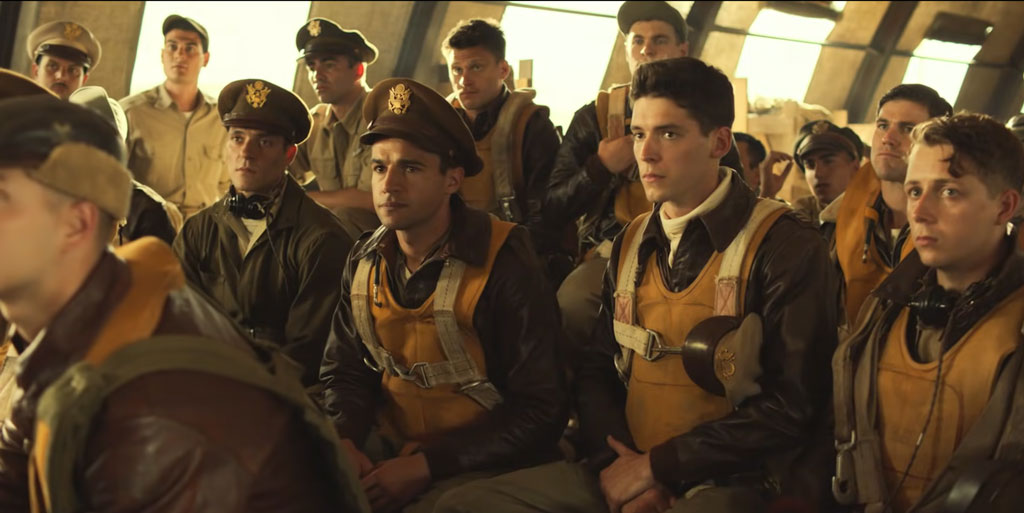
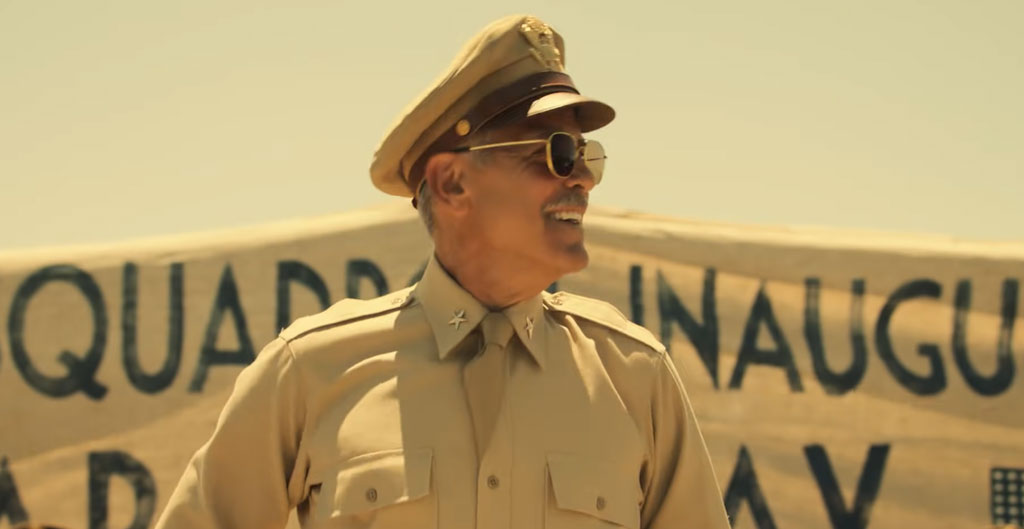
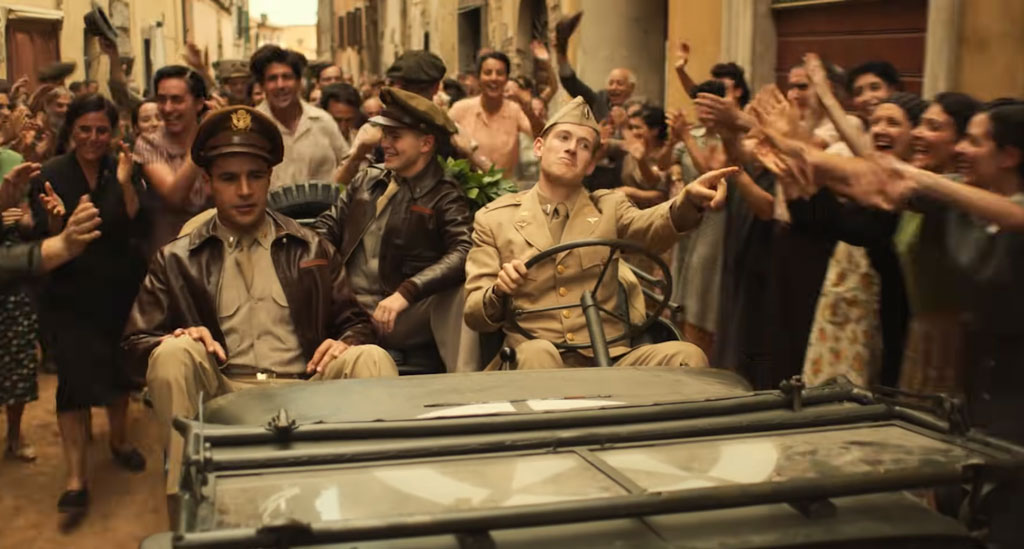
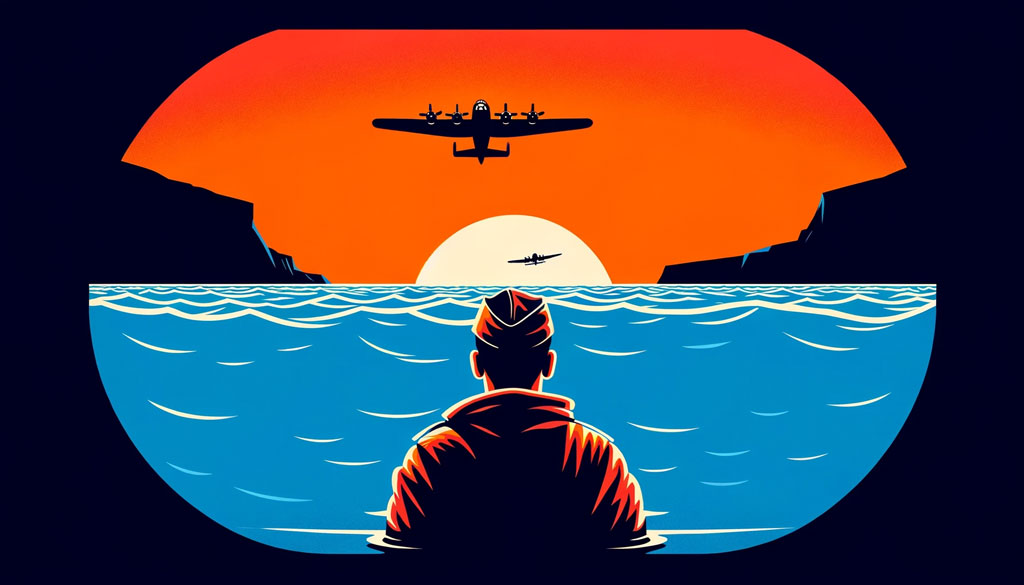
Comments